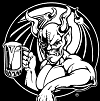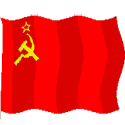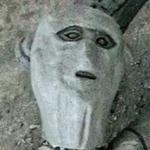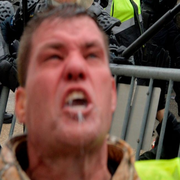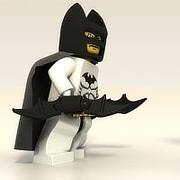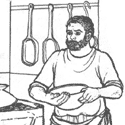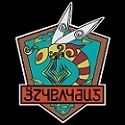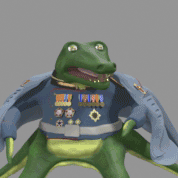|
Whelp, there goes your tempo in the Philippines.
|
|
|
|

|
| # ? May 17, 2024 17:19 |
|
Jobbo_Fett posted:List of KV's available starting 7 Dec 41 I would like to claim this and be delicious watercraft.
|
|
|
|
Making 2/1 hexes is going to be a long, long trip home. Hope you get that flooding pumped.A White Guy posted:If you really want to talk about longevity, it's amazing how, even today, some of this poo poo is still being used. For example, there is documented evidence of the T-34 still being used in combat even today. No joke, huh... https://www.youtube.com/watch?v=tHhBQc-n0vo
|
|
|
|
Jobbo_Fett posted:I never claimed it was all Norway's doing, the point was that attacking a poorly defended country still cost the Germans a lot of naval assets in comparison to what invading the British Isles might cost them. No, I agree completely. Even more so the case since the people the Germans planned on invading were the people who inflicted such serious losses on the Kriegsmarine during the Norway invasion. I guess I was more commenting on the naïvety of Norway in not realizing the strategic importance of their country to both sides and not preparing accordingly, or just agreeing to British protection in the first instance. That would have made the Norway campaign much less practical for the Germans. ZombieLenin fucked around with this message at 00:43 on Jan 18, 2016 |
|
|
|
ZombieLenin posted:I find it sort of weird that my grandfather talked so much I never claimed it was all Norway's doing, the point was that attacking a poorly defended country still cost the Germans a lot of naval assets in comparison to what invading the British Isles might cost them. The argument cares not for invading someones neutrality, but how their losses compare between invading an enemy further from the RN than what Sealion would do.
|
|
|
|
Grandpachat: My maternal grandfather was an american paratrooper but never jumped into combat. He got a purple heart somehow and after the war he was terrified of flying, because he might have to jump. Had some crazy tattoo on his shoulder, as well.
|
|
|
|
A White Guy posted:If you really want to talk about longevity, it's amazing how, even today, some of this poo poo is still being used. For example, there is documented evidence of the T-34 still being used in combat even today. Hell, even the StG. 44 is still out there fighting wars. The Syrian civil war is an absolute goldmine when it comes to footage of WW2 era tech, whether it's the FSA using StG.44s, the SAA using T-34s as defensive supplements , or ISIS using old German AT guns to lob shells at people. It's like each side just raided a museum.
|
|
|
|
Whenever my paternal grandfather tries to relay some of his navy stories to me, whenever he talks about anything he did during Vietnam, I can tell that he's lying to me about some of the aspects of it. There's no way that man didn't whore his way around the South Pacific, he was on a carrier for two years in South Asia.
|
|
|
|
Ikasuhito posted:It's like each side just raided a museum. They did.
|
|
|
|
A White Guy posted:Whenever my paternal grandfather tries to relay some of his navy stories to me, whenever he talks about anything he did during Vietnam, I can tell that he's lying to me about some of the aspects of it. There's no way that man didn't whore his way around the South Pacific, he was on a carrier for two years in South Asia. My paternal grandfather was always amusingly frank about it. He became a Southern Baptist preacher after the war, and was very blunt about how he wasted his youth and the spiritual danger of that kind of debauchery for young men. 
|
|
|
|
A White Guy posted:Whenever my paternal grandfather tries to relay some of his navy stories to me, whenever he talks about anything he did during Vietnam, I can tell that he's lying to me about some of the aspects of it. There's no way that man didn't whore his way around the South Pacific, he was on a carrier for two years in South Asia. I never really dug into the details of what my grandfather meant when he mentioned how far you could get with bartering cigarettes in Germany in 1946-1947 (he was part of the British-commanded Norwegian brigade that participated in the post-war occupation).
|
|
|
|
Randarkman posted:The gun may have been underwhelming when it came to engaging German armor past the Panzer IV, but the Sherman chassis was also put to great use for a great many other purposes than simply being a medium tank. To reiterate, people shouldn't poo poo on the Sherman. Contrary to popular belief the Shermans didn't really need a gun to beat armor past the Panzer IV because the chances of finding anything tougher and it not breaking down before an engagement is over were comically low.
|
|
|
|
Mans posted:Contrary to popular belief the Shermans didn't really need a gun to beat armor past the Panzer IV because the chances of finding anything tougher and it not breaking down before an engagement is over were comically low. Yeah, people tend to forget that the most common German tank to encounter wasn't even the Panzer IV, it was the StuG III. And that was built on the Panzer III chassis, though it did have a pretty nasty gun (but no turret). Anyway that makes all the comparisons with Panthers and Tigers pretty disingenious. Also some of the later Panzer IV models were pretty bad, like the one that removed electrical power to the turret requiring it to be turned manually.
|
|
|
|
Cythereal posted:My paternal grandfather was always amusingly frank about it. He became a Southern Baptist preacher after the war, and was very blunt about how he wasted his youth and the spiritual danger of that kind of debauchery for young men. My grandfather was pretty blunt about it and even had some non explicit pictures (I think my grandmom made him throw out the explicit ones.)
|
|
|
|
Mans posted:Contrary to popular belief the Shermans didn't really need a gun to beat armor past the Panzer IV because the chances of finding anything tougher and it not breaking down before an engagement is over were comically low. This is a dumb post. I apologize for being frank about it, but that is not how and why the Sherman had the gun it carried. Nor does it explain the Firefly conversion. The 76mm gun and the firefly conversion were both produced because the Sherman needed more penetrating power, and Panther tanks were being built in large numbers. What led them to not having as many 76mm upgunned shermans and fireflies was a lack of foresight and planning by the US R&D.
|
|
|
|
Jobbo_Fett posted:What led them to not having as many 76mm upgunned shermans and fireflies was a lack of foresight and planning by the US R&D. Also a lack of pressing need. Panthers weren't particularly common, much less their bigger brothers, and tank-on-tank fights were much less frequent on the western front than the history channel would tell you. Infantry, artillery, and air power all killed tanks effectively and often, and the western allies had lots of all three.
|
|
|
|
Sometimes airpower killed the same tank several times over. Being able to kill every tank with your tank: way less necessary when you have air support flying by every few hours or so. And are urban fighting where getting jumped by infantry is more of a thing. And by that point in the war, ground troops could totally kill tanks.
|
|
|
|
Its a pretty big issue when you need to be next to your opponent to kill him. Seriously, the argument that they didn't upgun Shermans because they wouldnt meet heavy tanks is dumb as hell. It ignores the entire issue of US tech not trying to keep up to date against enemy vehicles/weapons. Saying that they didn't have a lot of Panthers is loving stupid too when you learn that they produced around 6000 panthers and only about 8500 panzer 4s. Air power, artillery, and infantry played parts in eliminating the armoured threat, but that doesn't mean that tank engagements didn't occur. And upgunning helped the Shermans get more distance out of their shots which was a good thing.
|
|
|
|
Tank-on-tank warfare, simply put, was pretty rare outside the eastern front, and even then they aren't decided by frontal fire. Infantry were exceedingly dangerous to tanks because tank battles almost never happened in big open fields. Air power and artillery were just as dangerous because you don't need to blow up the entire tank to knock it out. Taking out a tread was plenty, especially against the mechanically unreliable Big Cats. Also, US tech not trying to keep up to date against enemy vehicles/weapons? The real world doesn't work like Civilization or Hearts of Iron. The US, by and large, equipped itself very well for the way it was fighting. Infantry, artillery, and air attack were more than enough in Europe against German armor, most of which was inferior to Panthers. "Tank engagements" is almost always code for "Tank + infantry + other AFVs + artillery and air support engagements."
|
|
|
|
In Italy, enemy tanks only accounted for 2% of tank losses. The greatest danger by far was from anti-tank guns, followed closely by infantry. The Sherman's 76mm gun was certainly more effective against tanks, but it carried a worse HE charge and had a lower effective rate of fire than the 75mm Sherman. Hell, the US 4th Armored Division had to be ordered to accept 76mm tanks, and this was after the kicked the poo poo out of multiple brigades' worth of Panthers at Arracourt. It's worth noting that the most popular Sherman variant by far was the up-armored M4A3E2 "Jumbo", followed closely by the M4 and M4A3 tanks armed with 105mm howitzers. That's not to say that upgunning the Sherman wasn't necessary (And US planners did underestimate the need for better anti-tank guns, which was why the 90mm on the M36 and M26 was so well-received), but there were legitimate reasons as to why it wasn't done sooner-as I mentioned in the MilHist thread, the reason why the US didn't have them on D-Day was due to logistical concerns and training time, both of which would have had a far greater impact on the invasion effort than slightly more effective anti-tank capabilities. Acebuckeye13 fucked around with this message at 05:55 on Jan 18, 2016 |
|
|
|
Why does every War in the Pacific LP thread devolve into German tankchat? Reposting from the last thread in an attempt to instigate (much superior) boatchat instead: HMS Hermes: Purpose-Built Pioneer It is often claimed that the Admiralty of World War I was backwards and hidebound, too concerned with tradition to develop new technologies. However, its vigorous pursuit of the aircraft carrier casts serious doubt on this assertion. HMS Hermes was in many ways the culmination of that effort, although the end of the war would greatly slow her progress. No account of the Hermes would be complete without a brief overview of the early history of naval aviation. The first take-off from and landing aboard a ship took place, at the end of 1910 and beginning of 1911, just seven years after the Wrights’ first flight. They were performed by Eugene Ely as part of an experiment for the United States Navy, which, along with other leading navies, was interested in the scouting and observation power of the new device. Similar experiments soon followed around the world, notably British Lieutenant C. R. Samson’s first flight off a warship under way in 1912. As early as October of 1912—within a year of its own first flight from aboard ship and only two years from the first ever such flight—the British Admiralty reviewed a proposal for a “parent ship for naval aeroplanes.” This fascinating prototype from private shipyard Beardmore’s already showed some features that were to become hallmarks of the proper aircraft carrier. At an estimated 11,500 tons displacement, it had a flat through-deck for aircraft handling flanked by two proto-island structures containing hangars and funnels and connected by a bridge; later testing would rule out the double-island configuration, but the through-deck would eventually win out over a variety of rather unusual arrangements. Although the Beardmore’s proposal was ultimately rejected, interest remained sufficiently high to warrant the conversion of an old cruiser, HMS Hermes (not the ship that is the subject of this post), and then a merchant ship then under construction, renamed HMS Ark Royal (not the famous WWII carrier), to experimental seaplane carriers before World War I kicked off in August 1914. The latter vessel was, interestingly enough, fitted with a mizzen sail to hold her head into the wind, making her the only aircraft carrier to fly a sail. The names Hermes and Ark Royal were thus very early enshrined in the aviation arm of the Royal Navy. Almost immediately upon the outbreak of war, the Admiralty acquired a few cross-channel steamers and later the elderly liner Campania for conversion to seaplane carriers. By Christmas 1914 they had performed the first ever naval air strike against a land target. In 1917, satisfied with the promising performance of the seaplane carriers, the Admiralty decided to venture into operating land planes from aboard ship with the conversion of the curious “large light cruiser” HMS Furious and the more conventional cruiser HMS Cavendish, which became Vindictive, into aircraft carriers with both the forward “flying-off deck” of the seaplane carriers and a “landing-on deck” abaft the superstructure. Heavy turbulence from the superstructure as well as hot stack gases exiting the funnels rendered the split-deck design impractical, resulting in many crashes before the design was radically altered. This experience as well as wind tunnel tests caused the next ship, the converted liner HMS Argus, to be redesigned with a flush deck. She was the first “true” aircraft carrier in the modern pattern and, commissioning in September 1918, the only one to operate during the war. By the end of World War I, the Royal Navy possessed a clear lead in naval aviation technology and it was in this environment of innovation that a new HMS Hermes, the first carrier to be designed as such, was ordered on 14 July 1917. While her design displacement of 10,000 tons remained static throughout her construction, little else did as ongoing wartime experience informed her designers. She progressed very slowly as construction repeatedly halted for major redesign work, especially of her flight deck and superstructure. Her hull was complete enough in 1920 to be towed to Devonport for finishing, which, in the post-war lethargy, took until 1924. As with other British carriers (and in contrast to American ships), Hermes’s strength deck (in effect, the upper flange, opposite the keel, of the girder that is a ship) was the flight deck itself, a consequence of the closed hangar design.1 Because the hangar sides must then transmit the shear forces between the strength deck and keel, this configuration significantly limits the number, size, and location of openings in the hangar, as well as the size of the hangar itself. Fairly early on it was decided that carriers should be able to maintain at least a five to six knot speed advantage over the battle line. Reasons for this include the ability to avoid battle as well as to catch up after turning into the wind for aircraft operations. Hermes’s 26.2 knot speed was believed acceptable for this. Greater debate arose over her armament: At this time, and indeed through the interwar years, naval theorists believed that a carrier must be sufficiently armed to fight off an attack by destroyers or even cruisers herself rather than rely on escorts. Everyone’s favorite Admiral Beatty pressed for a heavy gun armament of as many as 11 6in. With the already considerable demands on deck space and ordnance stowage of the carrier role, the additional space required by so many large guns and their magazines would have severely impinged on her relatively small displacement. In the end, she completed with six 5.5in and three 4in antiaircraft guns, a decision apparently chiefly based on guns already available in storage. Hermes was built with an almost comically oversized island and giant control top for her guns, making her difficult to control during high winds. Combined with other features presumably resulting from her messy design process (she trimmed deep by the bow and had a constant list to port), she had low margins of stability, exacerbated by low-mounted intakes for the boilers, that made her less than stellar as a major combatant. At only 10,000 tons, she was never large enough to be proper fleet carrier; her cramped design and over-large armament limited her aircraft complement to just 21. Still, for a first attempt she proved her concept well and added considerably to the Royal Navy’s body of experience with aviation. By World War II, Hermes was clearly fading into obsolescence and had already been placed in reserve once in the 1930s. Her now comparatively slow speed, small air wing, and scant protection led the Royal Navy to transfer her to the quieter Indian Ocean station shortly after the fall of France. Her war service was comparatively uneventful, consisting largely of anti-commerce-raider patrols and supporting light action in Italian Somaliland, until April 1942 when the Imperial Japanese Navy came calling in the Indian Ocean. Hermes attempted to flee with the aging Australian destroyer HMAS Vampire but the ships were spotted and, lacking adequate air cover, quickly sunk by Japanese carrier aircraft. 1. There are two basic paradigms in aircraft carrier design: the open-hangar ship and the closed-hangar ship. In the former, the hangar and flight deck form a superstructure resting atop the main structural elements of the hull; in the latter, hangar and flight deck are themselves part of the hull structure. Each system has its advantages. Because the main structural beams of a closed-hangar ship are farther apart, its hull may be made lighter for the same strength and loading (imagine bending a short, fat rectangle compared with a long, thin one); it also need not worry about including expansion joints to allow the flight deck to flex relative to the hull. The closed hangar, being self-contained, also lessened the risk of fire spreading throughout the ship, but with less ventilation could be vulnerable to a build-up of gasoline fumes. The open hangar, without the need to carry shear forces between the structural members through the hangar sides, could extend the full beam of the ship, increasing storage and handling space—attempts to increase the hangar space of closed-hangar ships by adding a second hangar level introduced problems of their own, such as high wind resistance and increased roll accelerations, without fully solving the problem (one large space is easier to work in than two smaller ones). The open hangar enabled aircraft engines to be warmed up below decks and was thus more suited to a doctrine of large air wings and large strikes; this was further helped by the open hangar’s lighter structure being more amenable to large elevators. The closed hangar was much easier to protect (both types could benefit from an armored flight deck, although this could be made lighter for the same protective value in the closed-hangar ship, but the open hangar was inimical to side armor), but British WWII experience found that much of the protection rarely came into play and may not have been worth the reduction in aircraft (remember that fighters as well as armor protect the carrier from air attack). One might summarize the differences as the open-hangar design having the advantage in operating aircraft while the closed-hangar design has the advantage in being a ship. I had intended to wait until we actually got a glimpse of Hermes (Veloxyll's lucky ship), but oh well.
|
|
|
|
|
Cythereal posted:Also a lack of pressing need. Panthers weren't particularly common, much less their bigger brothers, and tank-on-tank fights were much less frequent on the western front than the history channel would tell you. Infantry, artillery, and air power all killed tanks effectively and often, and the western allies had lots of all three. This has been said multiple times and it isn't true. Panthers by 1944 made up a full 50% of German tank division tanks. All the rest of the stuff is generally true with Shermans being good tanks and AT guns being the main killers. But by Normandy and beyond IF they saw a tank it had a fairly good chance of being a Panther. If the Germans were on an offensive they were using a tank division, so while you might not have seen a lot of it in terms of pure numbers averaged across the front, every time there was an important action tanks fought tanks to some extent. Also allied air power was completely useless in killing tanks.
|
|
|
|
Jobbo_Fett posted:This is a dumb post. I apologize for being frank about it, but that is not how and why the Sherman had the gun it carried. Nor does it explain the Firefly conversion. The 76mm gun and the firefly conversion were both produced because the Sherman needed more penetrating power, and Panther tanks were being built in large numbers. Jobbo_Fett posted:Its a pretty big issue when you need to be next to your opponent to kill him. Seriously, the argument that they didn't upgun Shermans because they wouldnt meet heavy tanks is dumb as hell. It ignores the entire issue of US tech not trying to keep up to date against enemy vehicles/weapons. Everyone being shot at inside a Sherman assumed a Kingtiger was spewing death upon them, even if it was a mere stug or panzer iv or even the Sherman's biggest nightmare: infantry with anti tank capabilities. Bigger cannons, armor, radios and engines allowed for a tank division to be a much more efficient force and that's why they kept upgrading their poo poo, not because of your senpai Panther. dtkozl posted:This has been said multiple times and it isn't true. Mans fucked around with this message at 07:49 on Jan 18, 2016 |
|
|
|
I need to know more about IJN torpedoes. I've heard they had a tendency to blow up the boat they were on but did a great job in general.
|
|
|
|
All WW2 threads have dalliances with Tankchat. it's just a thing. Even though the Pacific is much more of a naval theatre as far as ww2 is concerned. IJN ww2 torpedoes are amazing. Disgusting range, and reliable detonators as well as good torpedo training meant that Japanese torpedoes were super effective all through the war. Well, until allied pilots learnt that strafing the torpedo decks could set off their fuel, since they ran on an oxygen fuel rather than petroleum/gas.
|
|
|
|
Mans posted:But the scenario where the mighty uber-Panther mowed down countess matchbox Shermans who were hopeless in defeating them never happened. Ambushes, shooting first and infantry decided tank combat much more than long range honor duels. There is no reason claim that we are sawing to that extreme position. The facts are: the Panther was a fairly common German AFV, on par with the panzer IV. The Sherman, while a good tank, in its 75mm configuration could not penetrate a Panther from the front at all, and the 76mm had real trouble. In the major armored operations in the Normandy campaign tank divisions from both sides met more often then not. There no reason for hyperbole. The Sherman 76mm should have been available for allied armored divisions for Normandy, that it was not was as bad a mistake as the lack of cold weather gear, which by the end of the year caused thousands of allied casualties. It was a mistake that should not have been made. One among many, but that doesn't excuse it.
|
|
|
|
There are no panthers in this game. Take this conversation
|
|
|
|
dtkozl posted:There is no reason claim that we are sawing to that extreme position. The facts are: the Panther was a fairly common German AFV, on par with the panzer IV. The Sherman, while a good tank, in its 75mm configuration could not penetrate a Panther from the front at all, and the 76mm had real trouble. In the major armored operations in the Normandy campaign tank divisions from both sides met more often then not. While you're certainly right that the Panther was a more common tank than some people have made it out to be, you're somewhat off base with some of your other remarks. In particular, armored encounters between American and German units were not common during the Normandy campaign for the simple reason that Normandy is absolute poo poo for tank country. Winding roads, rolling hills, various forests, and row after row of bocage heavily restricted armored operations by both sides. If anything, the Panther was particularly unsuited for the terrain-as the commander of the Panzer Lehr division noted, quote:"While the PzKpfw IV could still be used to advantage, the PzKpfw V [Panther] proved ill adapted to the terrain. The Sherman because of its maneuverability and height was good ... [the Panther was] poorly suited for hedgerow terrain because of its width. Long gun barrel and width of tank reduce maneuverability in village and forest fighting. It is very front-heavy and therefore quickly wears out the front final drives, made of low-grade steel. High silhouette. Very sensitive power-train requiring well-trained drivers. Weak side armor; tank top vulnerable to fighter-bombers. Fuel lines of porous material that allow gasoline fumes to escape into the tank interior causing a grave fire hazard. Absence of vision slits makes defense against close attack impossible." When you factor in the fact that the tank engagements that did occur in Normandy were relatively close-ranged affairs, you can see how the advantages of the Panther were effectively negated-especially when you consider that the Panther could often be disabled by hitting them with WP, which in several cases were able to set the tanks on fire. Should the Sherman 76mm have been available for D-Day? Perhaps, but the Army had ample reason to keep them in reserve, and its hard to argue that anti-tank killing power would have been worth more than anti-infantry capabilities in the bocage-especially when tank destroyer units were already available and on-call to help deal with heavier German armor. That's not to say the Army didn't make mistakes-they had no idea the Germans planned to produce the Panther in such large numbers, and that guns heavier than the 76mm would be necessary-but by the time they were actually conducting major armored operations (i.e. the Cobra breakout) the 76mm Sherman was fully available to the armored divisions and separate tank battalions. And as I said before, not all tankers thought that the bigger gun was worth the upgrade, and 75mm Shermans continued to be produced throughout the war. The Army certainly made mistakes that cost unnecessary numbers of lives, but it's arguable that not having 76mm Shermans on D-Day was one of them. Edit: It's also worth mentioning that until the introduction of the HVAP round, the 76mm faced a similar difficulty in penetrating the Panther's front armor. Ironically, what may have saved American lives wasn't the gun, but rather the wet stowage system installed in the 76mm tanks. By taking the ammunition previously stowed in sponsons above the tracks (Where they were likely to be hit by practically any round that penetrated the tank) and placing them in individual compartments at the base of the hull, the "Wet" Shermans were far less likely to burn after being penetrated. By the end of the War, Sherman crews actually had some of the lowest fatality rates amongst any armor crews, for this and a number of other reasons. Acebuckeye13 fucked around with this message at 09:29 on Jan 18, 2016 |
|
|
|
Night10194 posted:I need to know more about IJN torpedoes. I've heard they had a tendency to blow up the boat they were on but did a great job in general. IJN torpedoes were, from a technical perspective, really really good. They had longer range than their contemporaries, they didn't leave a bubble trail like steam-powered torpedoes, and they didn't suffer from the detonator teething problems that plagued American and German torpedoes. Unfortunately, they were also "wasted" on IJN submarine doctrine that meant they weren't attacking the merchant marine actively, and the mother boats weren't as good as the US fleet boats or the German U-boats, and the price of that technical accomplishment was a reliance on oxygen-power which made the torpedoes very vulnerable to unintended detonations. On the surface side, the Japanese held a belief (with some historical justification) that superior night training would carry the day, but they were eventually overcome by the Allied use of radar.
|
|
|
|
Splode posted:There are no panthers in this game. Take this conversation There are Shermans though! Which makes the conversation entirely relevant!  So hey, lets talk about tanks in the Pacific! They weren't really any large-scale tank battles comparable to anything that happened on the Western Front, let alone the Eastern Front, but tanks still played a major role during the island-hopping campaign. Shermans in particular were well-suited towards the Marine Corps' needs, since it was relatively well-protected against Japanese anti-tank guns and the 75mm gun proved more than adequate at knocking out Japanese fortifications. For the Marines, the biggest problem with the Sherman was physically getting them-the Army had a massive need for Shermans to fill out the armored divisions and separate tank battalions, and many more thousands were being sent to Britain, the Soviet Union, and about a dozen other countries through Lend-Lease. In a quirk of fate, the Marines ended up choosing the diesel engined M4A2 as their primary tank, not because it shared fuel and simplified logistics (As is often suspected), but rather because the Army didn't want them and therefore the Marines would be able to acquire them several months sooner than would otherwise be the case. Later on as M4A2 production was cut, the Marines would also adopt the gas-powered M4A3-one of which is currently on display at the Marine Corps Museum in Virginia. Japanese tanks were, as we all know, not that great. Tank design and production simply wasn't a priority for Imperial Japan, and even their most outdated designs were more than suited for the fighting in China. Against the US, it was a different story-though Japanese and American tanks were relatively evenly matched during the first armored engagements in the Philippines in 1941, as soon as the Sherman started arriving Japan was hopelessly outmatched. By the end of the war they had managed to produce several designs that were roughly comparable to the Sherman, such as the Type 3 Chi-Nu, but these were kept within the Home Islands in preparation for the American invasion-and as such, they never saw combat. Japan wasn't the only one preparing new tanks for the invasion, however. The US had been developing several super-heavy tanks for use against Germany, and after VE Day these designs were re-purposed for the invasion. These included the T-29 Heavy Tank, which featured a 105mm gun, and the T-34 upgunned T-29 that had a whopping 120mm gun, which was nicknamed the "Stratosphere Cannon". Much like the German heavy tanks however they were far too large to actually be practical, and only a few were made by the time the war ended.
|
|
|
|
OpenlyEvilJello posted:Reposting from the last thread in an attempt to instigate (much superior) boatchat instead: Thank you
|
|
|
|
Acebuckeye13 I agree with you pretty much all the way but for this:quote:The Army certainly made mistakes that cost unnecessary numbers of lives, but it's arguable that not having 76mm Shermans on D-Day was one of them. It is not arguable. Yes the Panther would have been best if it was firing over 1000 meters away over open ground. Then its superior optics and gun would have told. But it is still a better than a Sherman 75mm at 300 meters in dense cover, and more often than not it was in an ambush position, not the other way around. Surrounded by their own infantry. That you dismiss frontal armor that negates your gun 100% of the time and a gun that can negate your armor 90?% of the time through some arcane formula of speed and endurance is nonsense. The fact is in an equal engagement the tank that acquires a target first and engages tends to win. How you can say a better tank for the allies wouldn't have saved many lives is ridiculous. As for them not being common? Yes strictly speaking they would not have been common for american units since the majority of the German armor was opposite of the British. But they both had a lot of Shermans AND saw a lot of tank on tank combat. The tip of the spear is an extreme minority, but it sees the majority of combat and the vast majority of armor.
|
|
|
|
Edit: To save everyone else I'm dragging this over to the Military History thread, this discussion really doesn't have anything to do with the Pacific beyond the post I already made.
Acebuckeye13 fucked around with this message at 09:53 on Jan 18, 2016 |
|
|
|
To put this in some perspective, let's compare the Type 93(Long Lance) torpedo used on IJN surface ships with its nearest counterpart, the Mark 15 used by the US. Even aside from being much harder to detect in the water due to said lack of a bubble trail, when set for maximum range it could travel 40 km, as opposed to the Mark 15's 13.5 km, and travel said distance at 38 knots, almost half again as fast as the Mark 15. Oh, and it carried a significantly larger warhead. When set for its normal effective range, 22 km, it reached speeds of 50 kts, again compared to the Mark 15 which had an effective range of 5.5 km, with a speed of 45 kts. The real issue, as stated, was their volatility combined with how widespread on ships they were. While the torpedoes didn't actually explode harder than their counterparts on account of the pure oxygen, though the larger warhead meant they did cause a larger explosion in the absolute sense, they were far more likely to explode in the first place from unexpected shocks - like say a nearby shell hit. This was compounded by the fact the IJN felt heavy cruisers should have torpedo armaments as well. Destroyers are already really flimsy, heavily relying on not getting hit in the first place, so the increased risk of Long Lances exploding is absolutely worth the all the benefits they bring. The issue really was whether they were actually worth it on cruisers, which ARE supposed to be able to slug it out with anything aside from battleships - introducing a very vulnerable weak point that can potentially cripple or sink said ship if they even get glanced.
|
|
|
gradenko_2000 posted:IJN torpedoes were, from a technical perspective, really really good. They had longer range than their contemporaries, they didn't leave a bubble trail like steam-powered torpedoes, and they didn't suffer from the detonator teething problems that plagued American and German torpedoes. The Long Lance is basically the embodiment of "high risk, high reward" in torpedo form. H.C. Bywater's The Great Pacific War: A History of the American-Japanese Campaign of 1931-1933, a sometimes-prescient novel written in 1925 about a fictitious naval war between the US and Japan, has the IJN making substantial use of both surface and submarine commerce raiders, although it never goes into specifics about torpedoes. I'd recommend reading it to many of the people who follow these LPs—as far as I can tell, the entire text is available free on Google Books and it fits in an interesting crossroads period where naval air plays an important but not yet dominant role. Acebuckeye13 posted:Edit: To save everyone else I'm dragging this over to the Military History thread, this discussion really doesn't have anything to do with the Pacific beyond the post I already made. Appreciated, and thanks for talking about Pacific tanks, too. Even though boats are unarguably cooler, Pacific tank combat is at least interesting and relevant 
|
|
|
|
|
gradenko_2000 posted:On the surface side, the Japanese held a belief (with some historical justification) that superior night training would carry the day, but they were eventually overcome by the Allied use of radar. There was a bit in Neptune's Inferno about a night action where Japanese scout planes dropped a pattern of coloured flares to mark speed and course of the US ships to the IJN gunners. That's pretty impressive but probably difficult to train replacements for once the ones with years of experience start dying.
|
|
|
|
gradenko_2000 posted:On the surface side, the Japanese held a belief (with some historical justification) that superior night training would carry the day, but they were eventually overcome by the Allied use of radar. How did night combat work w/o radar anyway? Can one even see the splashes to adjust targeting?
|
|
|
|
In no particular order: * You have binoculars with exceptionally large apertures to maximize the amount of light that they can gather * You weed out your night spotters to those that have the best possible night vision (to the extent of human genetics) * You fire your guns in salvos instead of continuously so your spotters can protect their night-vision * You develop flash-less gunpowder, again to protect the night-vision of your spotters * You develop star shells with as great a range and as great an illuminating power as possible, so you can lob them over the enemy ships to light them up without being so close as to give you away at the same time Night fighting was seen as a way to eat at the anticipated numerical superiority of the Americans, as they wouldn't be able to bring an overwhelming number of ships to bear when they're in a knife fight at close range. Torpedoes were also seen as being synergistic with this view, as you could fire a spread of torps from long range, the Americans would never see them coming because it was too dark, and they'd take even more losses before the battle gets joined inside the phone booth of darkness.
|
|
|
|
   Another wonderful dud.  Screw it, says Commander New. Lets just use the deck gun.   There was a ship from 'Stralia, Her destroyers did go an fail her, The Japanese were there, with torpedoes in hand, and now she lies on the sand.   These bastards make this run every day, and are responsible for most of our destroyed on ground. Today we get revenge.  We push the enemy back from Rabaul.   The Changsha offensive begins again.   We begin to reduce the defences at Manilla. I'm going to check my leader to try and remove one of their pluses.  We hold on in Bataan. I think this is stalemated for a while now, but I have plenty of troops I can bring in to support. Manillia first though. 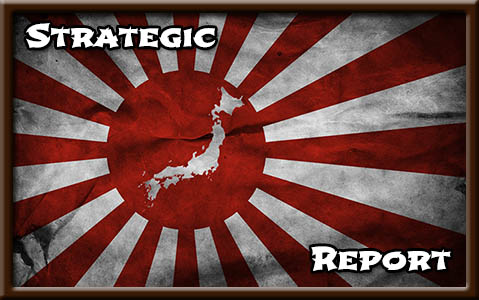  Not much action today, but apparently America has reoccupied some small base.  Yay, a dead destroyer, if they don't take it from me.
|
|
|
|

|
| # ? May 17, 2024 17:19 |
I don't think that's how limericks work, Grey, but bless you for trying. 
|
|
|
|






